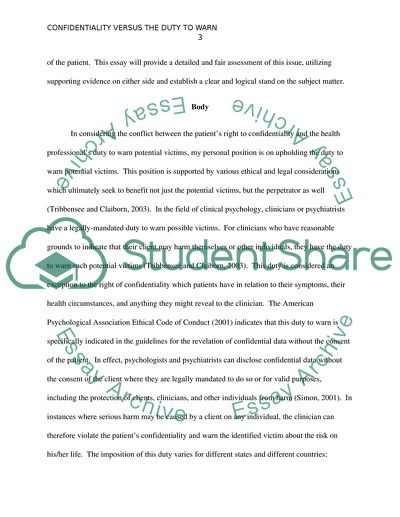Cite this document
(Confidentiality versus the Duty to Warn Research Paper, n.d.)
Confidentiality versus the Duty to Warn Research Paper. Retrieved from https://studentshare.org/law/1783276-ethics-confidentiality-vs-the-right-to-warn
Confidentiality versus the Duty to Warn Research Paper. Retrieved from https://studentshare.org/law/1783276-ethics-confidentiality-vs-the-right-to-warn
(Confidentiality Versus the Duty to Warn Research Paper)
Confidentiality Versus the Duty to Warn Research Paper. https://studentshare.org/law/1783276-ethics-confidentiality-vs-the-right-to-warn.
Confidentiality Versus the Duty to Warn Research Paper. https://studentshare.org/law/1783276-ethics-confidentiality-vs-the-right-to-warn.
“Confidentiality Versus the Duty to Warn Research Paper”, n.d. https://studentshare.org/law/1783276-ethics-confidentiality-vs-the-right-to-warn.


